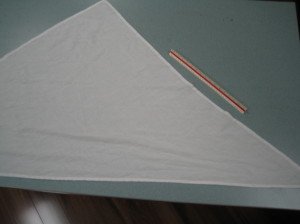There are major types of bandages that you should be familiar with – roller bandages, dressings, triangular bandages and tubular bandages. These are required for applying pressure, covering wounds or supporting a sprain or strain. There is a specific bandage for each of these, thus it is important to keep every type of bandage readily available in your first aid kit.
Roller bandages
Roller bandages are best described as long strips of material. These are often bought rolled up into a cylinder shape. For supporting a sprain or strain, an elastic roller bandage is used and wrapped around the limb or joint. This bandage must be applied in a firm manner but not tight enough to impede the circulation.
The linen or cotton roller bandages are used to cover gauze dressings. These bandages are available in various widths and secured in place using pins, tape or clips. Additionally, they can be used for wound compression if needed.
Dressings
Dressings are commonly used to prevent contamination, cover wounds and control the bleeding. For small wounds, adhesive dressings are used and readily available in various sizes including specific varieties utilized for knuckles and fingertips. The gauze dressings are thick cotton pads that are used for big wounds. These are held in place with tape or wrapped by a gauze strip. Take note that dressings must be absorbent and sterile to prevent the growth of bacteria and must stay in place until the wound fully heals unless regular cleaning is needed.
Triangular bandages

When opening a triangular bandage, it can be used as a sling for support as well as immobilizing or elevating the upper limbs. This bandage is needed for broken bones or strains or as a way to protect a limb after a surgical operation. If this bandage is folded narrowly, it becomes a cold compress to minimize swelling. These bandages are typically made out of disposable paper or cotton. Additionally, it is also utilized for applying pressure to wounds to stop the bleeding.
Tubular bandages
Tubular bandages are usually applied on the toes and fingers since these areas are difficult to bandage if gauze is used. These bandages can also be utilized to secure dressings in place on parts of the body that moves a lot particularly the knee or elbow. Larger varieties of these bandages can support joints, used under a cast or even hold dressings in place. The disadvantage with tubular bandages is that they need an applicator to apply and can be quite expensive if compared to the roller bandages.
These are the different types of bandages that you must be familiar with when delivering first aid measures during accidents at home or at work. It is important to have these bandages readily available in your first aid kit since you never know when you might need them.
